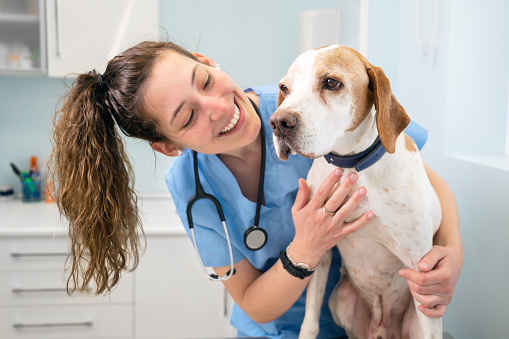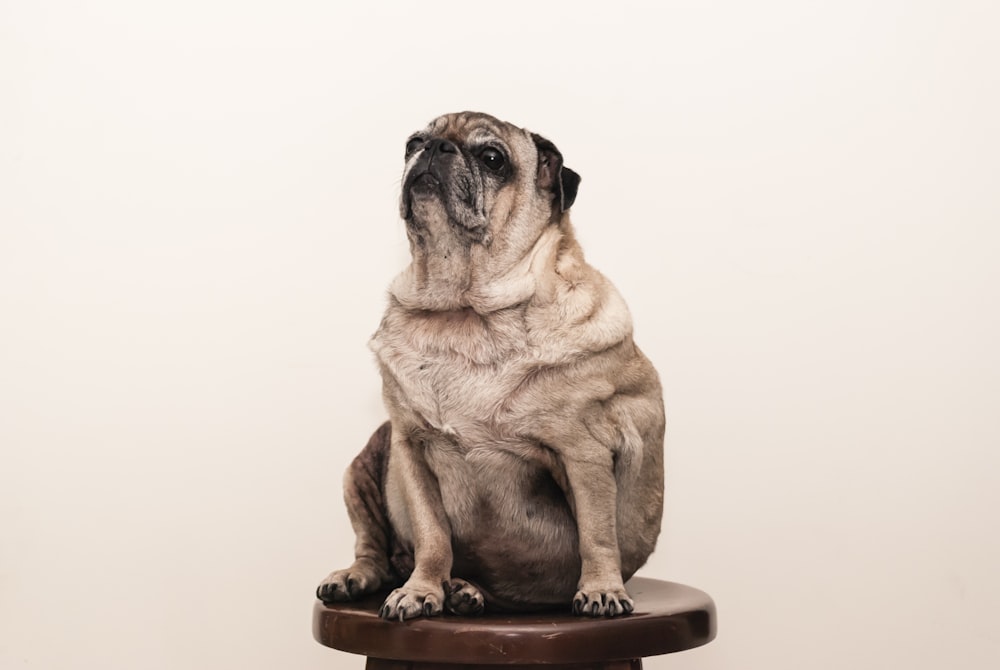We can all agree food is most dogs’ love language; what tells your dog “I love you” more than getting a snack? We all love to share the excitement our dogs feel when they come running at the sound of the treat jar, but we have to be aware of how our actions can lead to an overweight dog.
We use food to connect with them, motivate their training, and reward a job well done. Just like with us, though, too much of a good thing can have unfavorable consequences. Too many treats or not enough exercise can quickly lead to a chat with your veterinarian about your dog’s weight. How can you know if your dog has a healthy weight or not? What can you do if you have an overweight dog?

1. Health Issues For An Overweight Dog
When we talk about overweight dogs, the first and most crucial issue is how excess weight affects their health. 1 in 5 dogs in the United States is considered obese, and there is a good reason veterinarians are quick to tell you your dog is overweight; this issue is one of the leading health-related issues in dogs. An overweight dog can lead to any of the following conditions:
- High blood pressure
- Joint injuries
- Arthritis
- Heart disease
- Type 2 diabetes
- Cancer
An overweight dog can also have less energy and motivation, leading to even further weight increases. This cycle is a slippery slope for your dog that could lead to even more weight gain and an increased likelihood of secondary concerns.

2. How To Determine If Your Dog Is Overweight
Maintaining a healthy weight for your canine companion is essential to them leading a healthy and happy life. Not only that, but a healthier dog is less expensive than an overweight dog for you in the long run, so keeping your dog’s weight at an optimum level helps you and your wallet, too.
Weight Charts
One resource available to you is weight charts. Especially if you have a purebred dog, you can consult a chart with breed standards to determine whether the dog is in an acceptable weight range. Note that these charts are only helpful for purebred dogs within breed standards for other factors such as height. For example, if you have an unusually tall border collie, chances are their weight will not fall into the average breed range either, even if they aren’t overweight.
Here are some examples of average dog weights by breed:
If you don’t have a purebred dog, you’ll need to use alternative methods to ascertain whether your dog may be overweight.

Body Condition Score
One method for judging your dog’s weight is called the Body Condition Score, or BCS. Body condition score is a 5-point scale for categorizing a dog or cat’s body shape. It focuses on the areas your pets are most likely to store fat on their bodies to evaluate their overall condition. This scale can be utilized for dogs or cats of any breed or type and is a standardized system used by most veterinarians and other animal professionals. The point system is assigned as follows:
- Very Thin: Ribs, spine, and hip bones are easily seen from a distance. Little muscle or observable body fat. Emaciated and bony in appearance.
- Underweight: Ribs and spine are easily felt. The individual has an obvious “waist” when viewed from above and a clear abdominal tuck. Usually thin, lean, or skinny.
- Ideal: Ribs and spine are easily felt but not readily observed. A waist is viewed from above, and the abdomen is raised when viewed from the side. Normal and muscular in appearance.
- Overweight: Ribs and spine are hard to feel underneath fat deposits. The abdomen sags, and there are fat deposits on the hips, the base of the tail, and the chest—very little observable waist from above.
- Obese: Large fat deposits are visible over the chest, back, base of the tail, and hindquarters. The chest and abdomen may appear distended or swollen. No visible waist when viewed from above and no tuck to the abdomen.
Gauging your dog’s fitness level takes some practice, but guides like these can help you set a baseline for your pet to help them in their goal to achieve optimum health. If you still aren’t sure if your dog is overweight, consult your veterinarian and ask any residual questions you have.

3. How To Get Your Overweight Dog Back In Shape
Whether you suspect your dog is overweight or your vet has told you that your dog should shed a couple of pounds, there are two relatively easy yet essential ways to address this. Much like with humans, losing weight for dogs comes from eating right and exercising regularly.
Individualized Meals
Food is the number one problem when it comes to overweight pets. Some owners leave food out at all times to let their dogs graze. Others simply don’t measure how much food their pup is getting. Setting meal times and strict amounts of food will help your dog achieve a healthy weight. Try to feed your dog around the same time each day and control portions using a measuring cup.
If you’re unsure how much to feed your dog each day, check the information on their food bag: most commercial dog foods have feeding instructions based on weight. In the case of an overweight dog, do not feed to the amount recommended for their current weight; instead, provide the amount recommended for their goal weight. Again, if you aren’t sure what your dog’s goal weight should be, consult with your vet.
Exercise
Portion control is vital when shedding those pounds, but strict feedings alone may not help your dog get down to that ideal weight. Daily exercise is essential not only for the physical health of your pup but for their mental well-being too. Especially if your dog is overweight, begin exercise regiments slowly, gradually increasing length and intensity. Watch for signs of discomfort as their excess weight may have strained their joints. Swimming is an excellent, low-impact form of exercise for dogs and humans alike. Make exercising fun for your dog and you will watch the pounds melt off.
The Way To A Happier, Healthier Dog
Though the task may seem daunting, helping your overweight dog reach a healthier size is doable with a bit of commitment to a schedule. Don’t let those puppy-dog eyes derail you into overfeeding; a healthier weight for your dog will create a happier, healthier dog in the long run.

